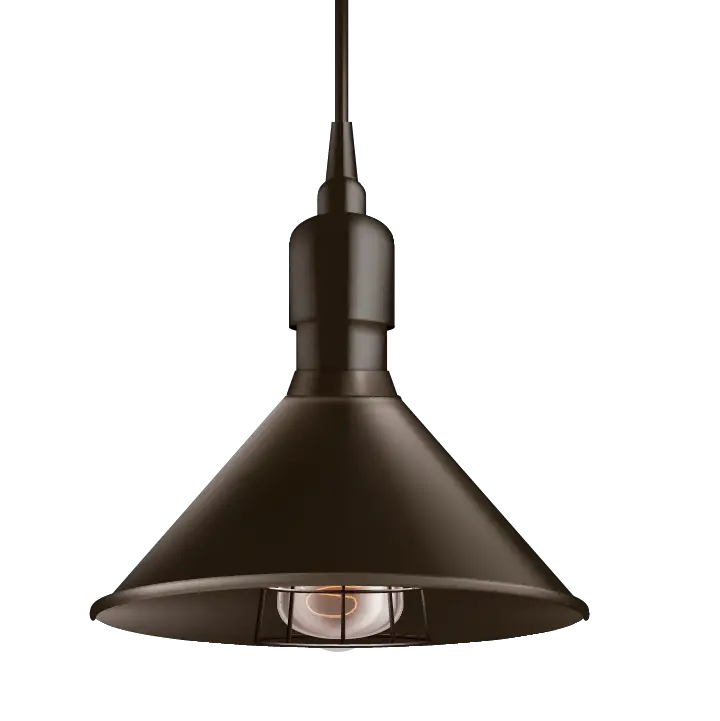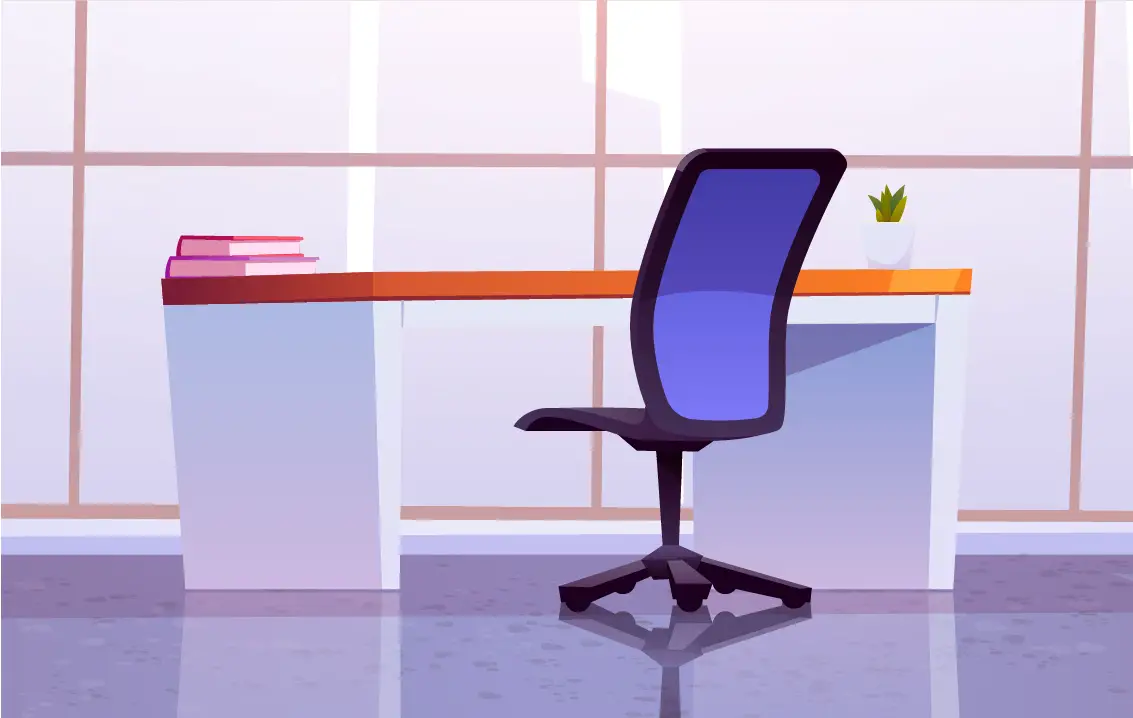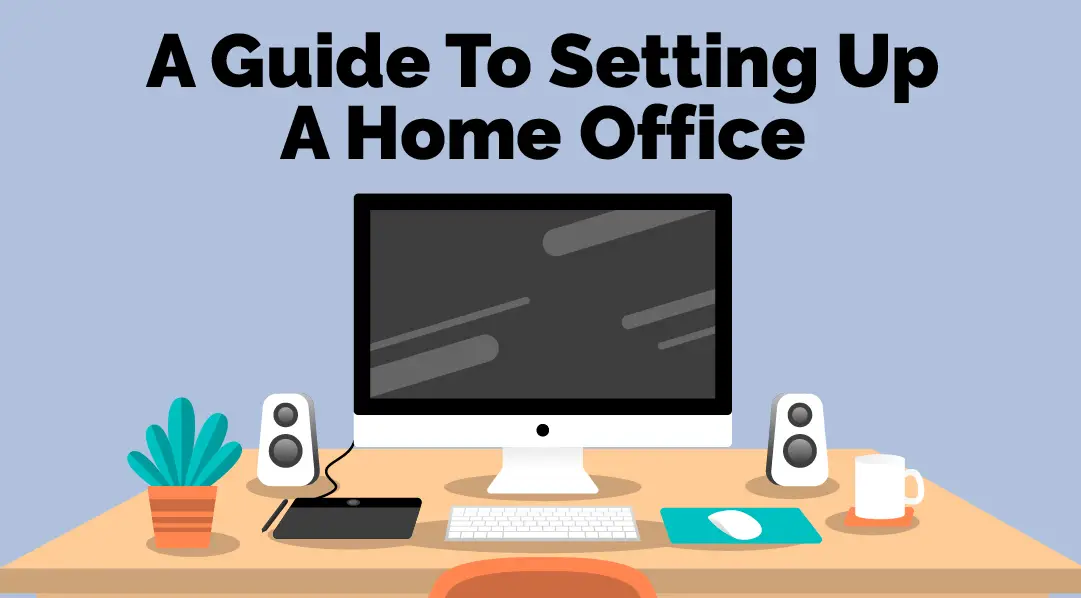A Guide To Setting Up A Home Office
INTRODUCTION
Want to set up a home office?
You’re by no means alone.
In the US in 2019, people working from home accounted for 7% of the civilian workforce, some 10 million people – up from just 5.2% in 2017.
Other developed countries report a similar leap. In the UK, the ten years between 2008 and 2018 saw a 74% leap in home working, with over 1.5 million people regularly working from their home offices.
In Australia, by 2016, 30% of the entire workforce earned their living mostly or entirely from their home office.
And all of that was before Covid-19.
While there may well be a backlash and a restoration to previous norms, the virus seems likely to have made two fundamental changes to office working patterns.
On the one hand, it has proved to many companies what’s possible without a central office hub – much office-based work depends on getting only a handful of elements right.
And on the other hand, it has turned on a lightbulb above many companies’ heads. Do they absolutely, positively need an expensive piece of corporate real estate? Do they need to pay ground rents, insurance premiums, power bills? Do they need to staff lunchrooms, hire janitors or buy enormous quantities of office equipment?
Historians tell us that the Black Death was both a global catastrophe and a force for social change, because in its wake, workers were able to demand better pay and conditions, because there were fewer workers around.
Covid is unlikely to become so cataclysmic a plague, and it may not change the economic structure of the whole world.
But one thing is certain. Most office cultures that were reluctant to allow their workers to have home offices before the Covid crisis have had proof handed to them of just how much can be done from home, while keeping office workers safe from the risk of infection.
Putting that genie back in its bottle may be a thing that neither workers nor companies are in any hurry to do.
But let’s get real for a minute. The people who worked from home during the Covid pandemic’s first wave weren’t doing it as it would ideally be done. They were working from bedrooms. From spare rooms. From living rooms and dining tables. They were doing it as a stop-gap, rather than as a long-term working solution
What’s the difference?
Planning. Thought. Long-term physical safety.
If you, like the millions before you, are going to set up a home office from which you intend to work indefinitely, no couch or kitchen table is going to cut it.
If you’re going to do it – let’s do it right.
ASSESS YOUR REQUIREMENTS

The Physicals
You are the most crucial piece of any home office set up. So before you create your office, take a look at yourself, both inside and out.
How’s your eyesight? Wear glasses or contacts? Get advice from an optician or an ophthalmologist. Firstly, there might be special coatings or lenses that will help reduce screen glare and its potentially harmful effects on your eyes. But beyond that, they can advise you about the size of screen that’s best for you, and how far away you should place it to minimize eye strain.
How’s your posture? Do you need a chair with extra lumbar support, or extra cushioning? Do you need a fixed-position chair or one that rises and lowers depending on your needs at any given time?
Do you need a footrest? A wrist-rest? A separate number-pad for the intensive use of figures?
In addition to the physical issues that prolonged office work can bring, what about your mind? Are you more comfortable in confined spaces, the hug of a nook or the comfort of a cubicle, with everything in easy reach? Or do you need light and air, wide windows, plain walls and a view of the outside world to give yourself a sense of creative space?
Think of all these things first and you’re doing the kind of thinking you need to fix every other element of your home office into place
Think of all these things first and you’re on the road to building a home office which won’t lead you into real physical problems down the line.
Think of all these things first and you’re putting yourself at the heart of the office design – exactly where you should be.
MAXIMIZE YOUR SPACE

The Geographicals
Once you know the things you need in any office space if you’re to avoid pain, discomfort and actual injury over time – from eye-strain to posture problems to carpal tunnel syndrome and mental frustration or depression – you’ll have an idea of what your must-have list looks like.
How you build up from that list depends on the space you have available.
Whether you have only a tiny closet available or a spare bedroom you can convert, commit to the space. It’s not a closet or a bedroom any more, it’s your home office. Choose a room that gives you as much or as little of the space you feel you need to focus and be productive, and work with it.
If you have square footage to spare, then finding the right room to turn into your home office won’t be a problem.
If you don’t have space to spare, you need to get creative in how you establish the work-life divide that brings the ability to focus, to switch off, and to achieve a balance between the two.
If you don’t have a room with a door you can close, consider a couple of cubicle panels, to separate your work environment off from the rest of your home space. Any way in which you can separate your work space from your living space will help you make that mental shift between environments.
Walls and a door are best to separate you from your home life, especially in terms of sound if there are other people at home during your working hours. If you don’t have them, anything to make your working environment ‘other,’ be it panels or bookcases or even other bits of home furniture can be useful to establish a ‘work zone.’
THE IMPORTANCE OF LIGHTING

The Illumination
Ideally when choosing your office or work zone, lay claim to one of the windows in the place, so you get a source of natural light and even possibly a view in your workspace, both of which can help even a small space feel bigger and brighter than it is.
Quite apart from which, if you have a natural light source through a window, it cuts down on your need to turn on electric lights for at least part of the day, which can make you feel better about your space and which costs you less in your power bills each month.
While we’re on the subject of light, whenever possible, choose natural lights and lamps for your home office.
The benefit of natural light, both sunlight and the artificial alternatives in natural lamps, has been proven to raise people’s moods in office environments, focusing them, boosting their calm and their productivity, and in combination with periods in the actual, Vitamin D-producing sunlight, guarding against both a depressive attitude and the likes of Seasonal Affective Disorder. So whenever possible, aim to have natural light and at least one window in your home office.
TIPS FOR YOUR WORK SPACE
The Audibles
One thing to consider in your home office which is probably not a factor in your company’s office is noise. If you happen to live by a lake or a coast, you’re probably going to want to choose a room or space with the ambient noise of nature coming in through a window.
If on the other hand, you live somewhere where there’s a noise of construction, or traffic, or rowdy neighbours, you’re going to want to flee to the other end of your home, where those noises stand less of a chance of interrupting your concentration day in, day out, so you can focus on getting as much work done as possible.

It may be that not all the things you feel you need in an office in terms of space and light and quiet are available in your home, but if you commit to a particular space that gives you most of what you want, you can begin to make it your office by the things you do to that space.
The Environmentals
Part of the wonder about working from home is that – you’re at home. All your familiar things are with you. But beware too strong a merging of your home environment and your work environment. Feeling like you’re ‘at home’ can lead you to work longer hours unpaid, or let your focus drift for hours, aware you can technically make up those hours later. But those made-up hours are a mortgage on your home time, eating into the hours when you’re at home, either with friends or with your family, living your larger life.
Be strong. Where the day-to-day routine of going in to an office marks a natural boundary between your work-self and your life-self, working from a home office blurs that boundary unless you can bring the discipline to set up your own version at home.
If possible, choose a room with a door you can firmly close. When you’re on one side of that door, you’re at home, with your at-home mindset. On the other side, you’re at work, with ideally a minimum of distraction.
Unless it’s genuinely necessary for your work, keep all the distractions of home life out of your office space – your TV, your games console, your library of ‘for-fun’ books, your friends and your family. Whatever work you do, keep it within your home office space, so that wherever possible, when your paid hours each day are up, you can walk through the door and leave the office behind you.

The Chromatica
What’s your favorite color? A color that speaks to you, encourages you, makes you smile?
It may well be that your office space is part of another room in your home, in which case, the question’s irrelevant. If you have your own room though, consider giving it a paint job in a color or colors that inspire you to creativity, productivity and positivity.
Just as a tip, once you’ve found the colors that give you that energy and positivity boost, back them off by a couple of shades.
Why?
Because colors that give us energy and vitality and smiles on a chart can be too much on the wall, day in, day out. Backing off the vibrancy a little should still let you get that positive mood boost, without necessarily giving you headaches or hives when you have to live with them in a work setting. They should enhance your determination to get on with your work, not detract from it.
What about artwork?
Again, this depends on the amount of wall space you have available, but anything you put on the walls of your home office should make you calm, or focused, or act as a micro-break – pictures of your family are great in this respect, keeping them with you through your work day, but not inviting you to contemplate line and form and color for three hours when you should be completing that sales report for Head Office.
The Greenery
There is actually evidence that having plants and flowers in an office space benefits the people who work in the space. Both in terms of oxygen recycling and refreshing, and a connection to the wild outdoors, plants are said to boost our mood.
Plus, in the absence of colleagues to go and visit, having to occasionally, or even daily, get out of our chair to go and check on the plant life can be a useful micro-break to get the blood flowing to your legs and get you moving again.
That said, if you have hay fever or allergies, or if tending to plants is just not your thing, you’re under no obligation to include greenery or flowers in your personal home office.

THE HOME OFFICE ESSENTIALS

The Ergonomicals
So you have your walls as you want them. Now it’s time to get serious about hardware.
If you’re going to equip a home office in which you intend to work for hours each day, and you don’t want to build up sprains, strains, injuries and pain over the years, it’s time we had the Ergonomics talk.
Ergonomics?
Greek phrase. Means ‘The Laws Of Work.’
And it breaks down as the series of rules to follow to make sure that the way you work doesn’t hurt you.
Sounds simple, right? Don’t poke yourself in the eye with a pen and we’re good to go, yes?
Hold on there, Sparky. There’s a little more to it than that.
Years of working with your hands and wrists aiming upward at a keyboard, or with your wrists pressing against the edge of the desk, is a great way to get the likes of Carpal Tunnel Syndrome or Repetitive Strain Injury.
Years of slumping in an unsupported chair while you do your office work is a first class ticket to spinal pain, and probably hip displacement too.
Years of squinting at a screen too far away or too small can lead to eye-strains and increasingly severe sight issues.
Just three of the things ergonomics exists to stop from happening.
And so, just three of the things you need to take on board when you’re buying the hardware with which to equip your home office.
There are ten principles of ergonomics to apply to your office design, and we’ll come to more of them later, but let’s deal here with the interaction between three pieces of equipment and their effect on you in your working environment.
Let’s talk about the ergonomic rules that govern your desk, your chair, and your computer.

Desk Law
Your desk has to do three things.
Firstly, it has to fit the space you have in your office. Measure once. Measure twice. Measure a third time before you click the ‘buy’ button, so you know you’ll have the space both to fit the desk together, and to sit it in the space of your home office.
Top tip – if you’re putting the desk together from pieces, do that in the room or space you’ve chosen as your home office. The last thing you want is to end up having a fully constructed, glued or screwed desk…and then discover you can’t get it through the door. That’s great in sit-com, but it’s less funny when the expensive joke’s on you.
Secondly, it has to be big enough to fit your equipment on it – which is a chicken and egg situation. Your equipment has to fit on the amount of desk you have. So don’t short yourself on desk space. Go as big as you can within the confines of the home office you have.
If nothing else, that will allow you options for the set-up of your workspace with extras, add-ons and useful business tools, in addition to making sure there’s enough space for the essentials like your computer and keyboard, while allowing you to keep in step with ergonomic principles.
And thirdly, it has to work for you.
What does working for you mean?
That’s where ergonomics comes in.
Your desk should allow you to sit at it with your legs bent at right angles at the knee with your feet flat on the floor – so there should be enough leg-room underneath it to let you do that.
It should also allow you, in conjunction with the chair you choose, to bend your arms 90 degrees at the elbow, and keep your wrists level when you type, rather than reaching up to the keyboard on the desk or even aiming down at it as you might were a laptop on your lap.
And thirdly, it should allow you to put your computer screen on it in such a way that the top of the screen is at or slightly below the level of your eye, at a reasonable distance away (between 18-28 inches).
You can achieve this at a range of heights, and your own height and proportions will usually dictate what you need your desk to do for you. But as well as the size considerations, keep the ergonomics of the purchase in mind when looking for your ideal desk.
And of course, don’t buy a desk that doesn’t speak to you. If you don’t like the look or the feel of a particular desk, then sitting at it day after day will feel more like punishment than creative or dynamic work. When all the ergonomics are taken care of, you have to feel like this is your desk. Choose one that makes you want to go to it and sit behind it every day.
Chair Law
As with your desk, there are ergonomic rules to follow if you want to get a chair that can minimize the long-term impact of home office work.
Essentially, the two things to look out for in an office chair are lumbar support – support of the lower back – and variable height, so you can adjust it. That adjustment will let you make sure that your feet lie flat, your knees are bent, your spine supports you comfortably, your arms and wrists are flat to the keyboard, and your eye line to the computer screen is comfortable.
All these things will take some getting used to, but they’re important to avoid your home office becoming a self-torture chamber over time.
The degree of lumbar support in particular will help correct your posture so that sitting in an office chair for hours every day doesn’t put undue pressure on your vertebrae and leave you with issues later in life.
There are other decisions to make about your office chair – should it be static or on wheels? Should it have a recline function, or stay upright? Should it be extra padded or have cushions added? Should it have arms, even?
These are the areas in which you get to play more and express your own choice.
Chair-arms sometimes help maintain the correct line for the wrists, for instance, but sometimes get in the way. Wheels can help you move around your working environment quickly to get whatever you need, but might feel insecure to you.
Choose a chair that feels like it offers you a place to do what you want to do – crunch a ton of numbers, write a killer sentence or a killer piece of coding. You name it.
Get the ergonomics right – that’s just the you of today being kind to the you of tomorrow. But then, get yourself a chair which speaks to your working personality and will help you make the most of your time in your home office.

Computer Law
The ergonomics of which computer to get are straightforward. When sitting at your desk, your eyeline should be at or slightly above the level of the top of the screen, at a distance of between 18-28 inches.
Simple?
Yes, but it brings choices with it. Is your desk big enough to allow you a screen that can be that far away and still present you with easily legible information? Are you looking at getting one big screen, or a multi-screen environment for design or finance work? Are you using a laptop instead of a traditional desktop machine?
If you’re going the laptop route for the added benefits of portability, you’re going to need a significant riser on the desk to lift up the laptop, both to obey the ergonomic screen level rule and to allow the laptop’s fans to operate and keep it running to the best of its abilities.
Think about what your work actually entails, and how you obey the ergonomic rules with your screen of choice before you decide on which type of computer, with which size and type of screen, will best suit your new home office.
Of course with computers, there’s more than the straightforward ergonomics to consider.
In previous eras of home and business computing, it was important to have giant amounts of local storage, either on the machine itself or through an external disc drive.
These days, the balance has shifted towards cloud storage, so you’re free to choose a computer with less storage memory, but you’ll probably need a good deal of processing power, to help the modern programs you’ll be using run at their optimal speed.
You don’t need a machine that could run the Pentagon (unless of course, you do!), but don’t under-power your processing speed, because the modern business world lives and dies on the speed of its connectivity and action.
At which point, it’s probably time to talk about…
The Intangibles
So the walls are pretty, the desk is set up, the chair is inviting you to smash productivity records and the computer is ready to go.
How’s your net speed?
How’s your power supply?
How’s your heating? Your air conditioning?
How easy is the connectivity of your home office to the rest of the world?
It’s a regular failing of modern work-from-home set-ups that they focus unduly on the hardware, without thinking of whether there are enough power sockets nearby to run the system, or how fast the net speeds are in the home. Are you still using domestic cable internet when what you really need to work from home is fiber? Maybe talk to your company about an upgrade, since you’ll be using the increased speed and data capacity at least partly on their behalf?
Any home office is likely to be a hub of electrical plug-ins. Do you have enough sockets nearby to allow you to operate without trailing the floor in potentially dangerous cables? If not, think about investing in a socket hub, rather than building increasingly elaborate extensions.
What’s the environmental situation in your home office? Are there icicles forming on the end of your nose? Are you flopping around like an extra from Cat On A Hot Tin Roof? Get the room or space tailored to comfortable working – portable heaters if you’re freezing, air conditioning if you’re melting, you name it, whatever fits with your particular circumstances.
You want to be working, not distracted by your environment. You want enough power to do all the work you have, without becoming a fire hazard or a tripping hazard. And you want enough data-flow between your computer (and your phone) and the net to let you just get on with the job.
These are the intangible elements of a home office, but get them wrong and what you’ve created for yourself is essentially a Misery Nook.
SOFTWARE AND TOOLS FOR REMOTE WORKING

The Technologicals
Assuming you’ve avoided the Misery Nook, what exactly should you be running on your computer? What do you need to turn it from a box of frustrating electronic ineptitude into your switched-on, ultra-connected worker of everyday miracles?
Ultimately, the specific programs you use might be dictated by the culture of your workplace – are you a Microsoft office, or do you swear allegiance to the house of Google?
Or are you holding meetings on the newest contenders in town, like Zoom?
Bottom line, these will be corporate culture decisions, but the kind or programs you need will be fairly similar, with job-specific specialization.
You’ll need a suite of basic tools – a word processor, a spreadsheet, possibly a database. Microsoft has the legacy trustworthiness in this area with its Microsoft Office package, but Google’s establishing an equality in this area. Its G-Suite includes second by second data saving to a central resource, which minimizes mishaps. That said, Google’s advantages rely on internet connectivity, where Microsoft can be used unconnected and stored locally.
You’ll need an email system – the choice is mind-boggling, from Microsoft’s Outlook clients and Google’s Gmail through a whole host of web and server-based alternatives.
You’ll need access to shared workspaces, either through a specific company server or a generic shared space software. There are plenty of versions of this technology, like the iCloud, Dropbox, the Microsoft One Drive and the Google Drive, and the likelihood is you’ll have access to whichever system is adopted by your company.
You’ll need an office intranet and instant message system, to cut down on email traffic and give you the instantaneous public/private messaging systems that most replicate a true office environment – check something with the boss, ask a colleague for their view, do a shout-out to everyone online. The likes of Slack deliver this ‘together, while apart’ feeling of a genuine office.
And you’re going to need a video conferencing program for meetings and presentations. Again, the market is quite broad – Skype, Microsoft Teams, Google Hangouts or the increasingly ubiquitous Zoom are popular, and have proven themselves to have a fundamental place in any future remote office function.
The Portables
While the whole point of a home office is to replicate your ability to work from an office-like environment, and to leave work in work and home at home, there’s also the 21st century reality of portability. Make sure any portable devices like your tablet and phone have copies of the most important communication software, like Slack, Hangouts or Zoom, as well as things like Microsoft Office or the Google G-Suite, probably alongside WhatsApp for team – and friendship – building among colleagues.
The Additionals
No modern desk is all about the keyboard and the screen. There will always be things you need to keep your office operation flowing smoothly.
In previous eras, these would have included a bulky printer and a cross-cut shredder. Your office might still need these items if you’re heavily involved in hard copy documents. The ergonomic principles say you should be able to reach most of the essential things to do your work without overstretching – so it’s worth seeing how much desk-space a printer (ideally with scanner function) takes up.
These days you’re as likely to need a charging station on your desk for phones and other portables. Perhaps a USB bank to quickly connect other devices to your main computer, so you’re not fiddling with messy connections.
If you’re using a laptop, remember the riser to keep it at an ergonomic eye-level. Investigate getting a riser with ventilation and/or fans to keep the laptop cool.
This is where you assess your needs for a hard-copy filing system, and where you’re going to put one. Filing cabinet? Bookshelves? In and out trays?
All of these are viable options and this is the moment to assess what you actually need, how much space you have, and to add to your office accordingly.
Once you’ve dealt with the essential add-ons, it’s the moment to see whether you have space for the likes of a coffee station or a mini-fridge, some speakers for musical moments of brain-wiping work-relief or anything else that while not strictly work-necessary would make for an improved and happier workforce of you.
Go on, you know you want to. Maybe downsize your external hard drives to SSDs, that should free up some space for a coffee station. Including a USB mug-warmer. Just…because.
This is also the moment specifically not to forget at least one bin for garbage. It’s a tiny thing, but you’d be amazed how quickly office garbage piles up without a system in place to deal with it.
CONCLUSION
The Personals
Aside from the life-improving gadgets, once everything else is in place, that’s when your desk is free for a little personalization.
Not a lot of personalization – you’re creating this space specifically to be a productive work environment, separate from your home space, after all – but just a little essence of the you behind the worker. A couple of pictures, maybe. A favourite plant. And, because this is your office at home and no-one’s going to pop around and judge you for it, if you want to have a sentimental Troll-doll, out of sight of any video meeting, then really, who’s to stop you?
Building a home office is a matter of creating the right environment to get as much work done as you can, of an inspired and inspiring quality, without having to deal with a commute or an actual shared environment. There are things to prioritize – natural light, ergonomics, effective connectivity to the systems that make your job a good fit for home working. And then there are matters of your uniqueness at the heart of an office environment, and matters of discipline where you separate your workspace from your home space.
Build your home office from the available space upward, and you should find yourself at the heart of an office that lets you make the most of your time and your productivity, without the hassle and the expense of a commute.

